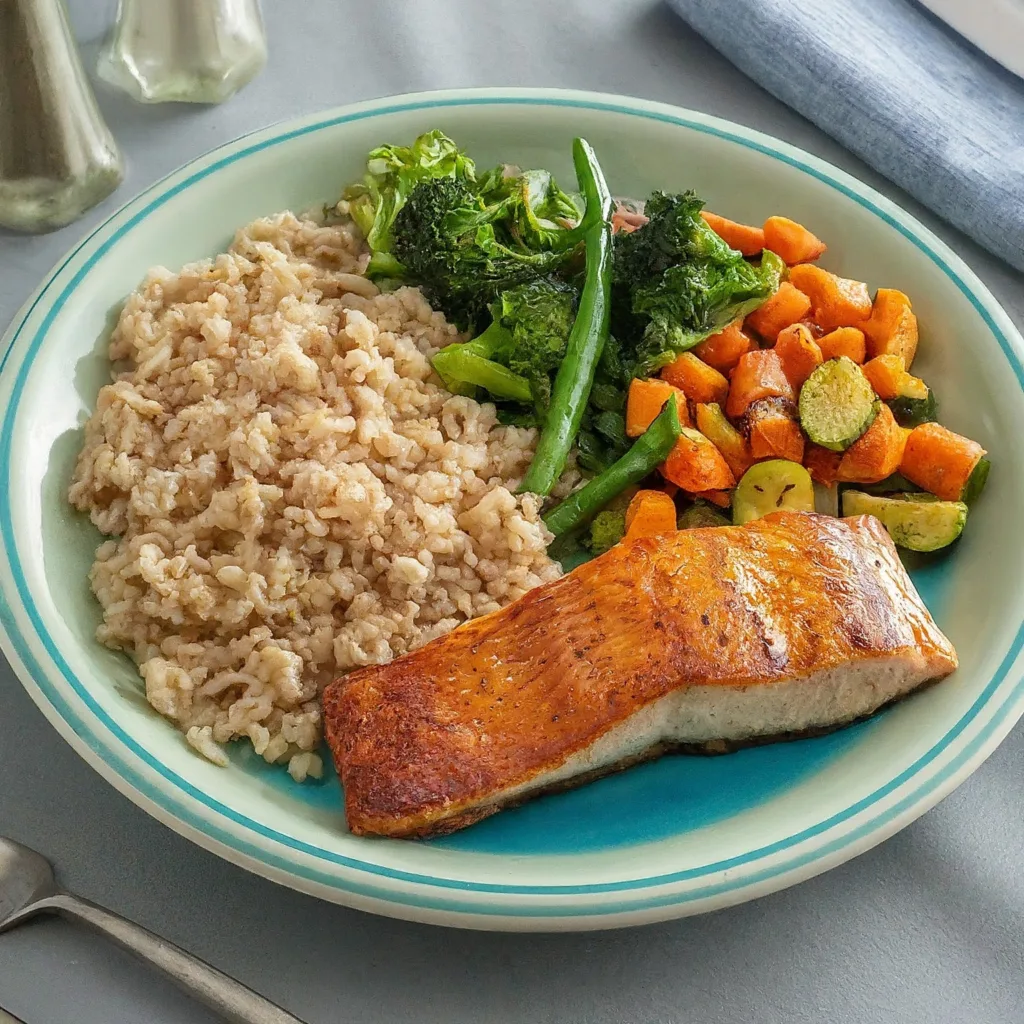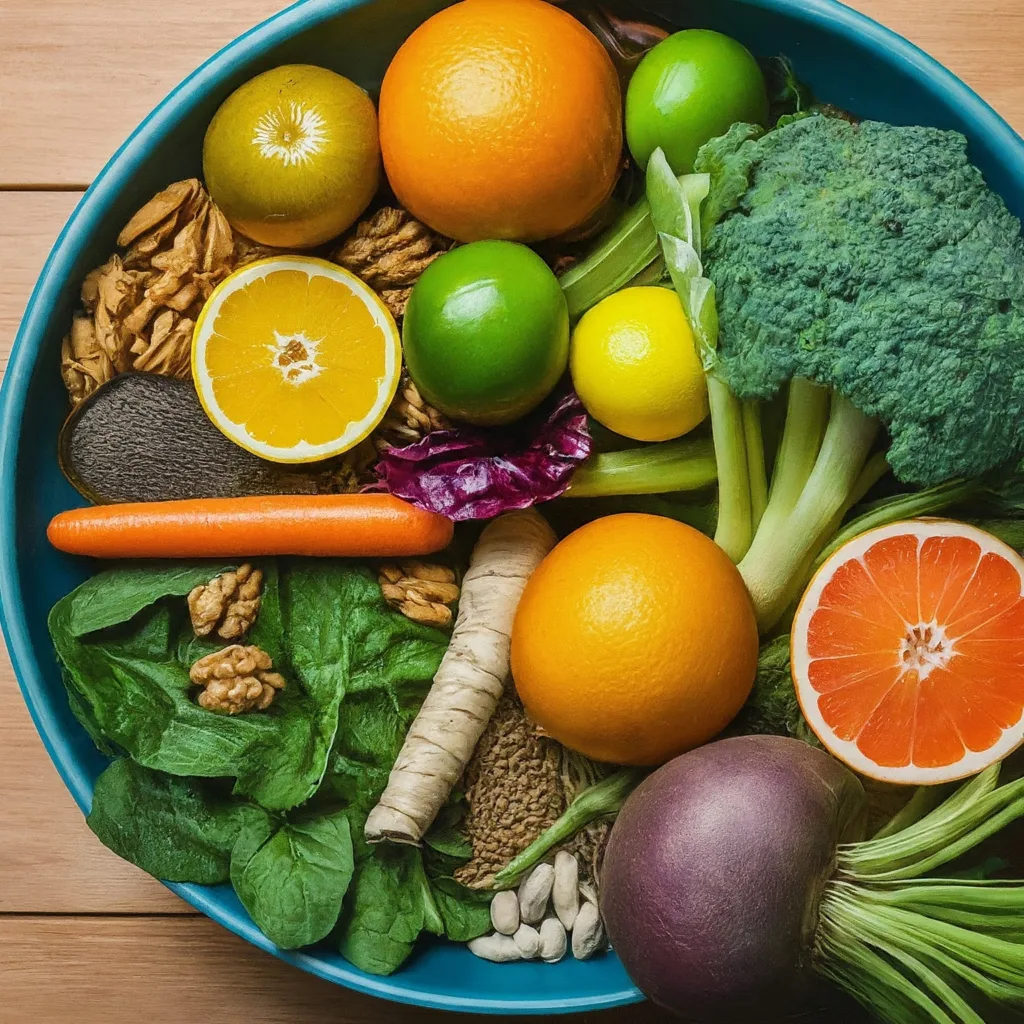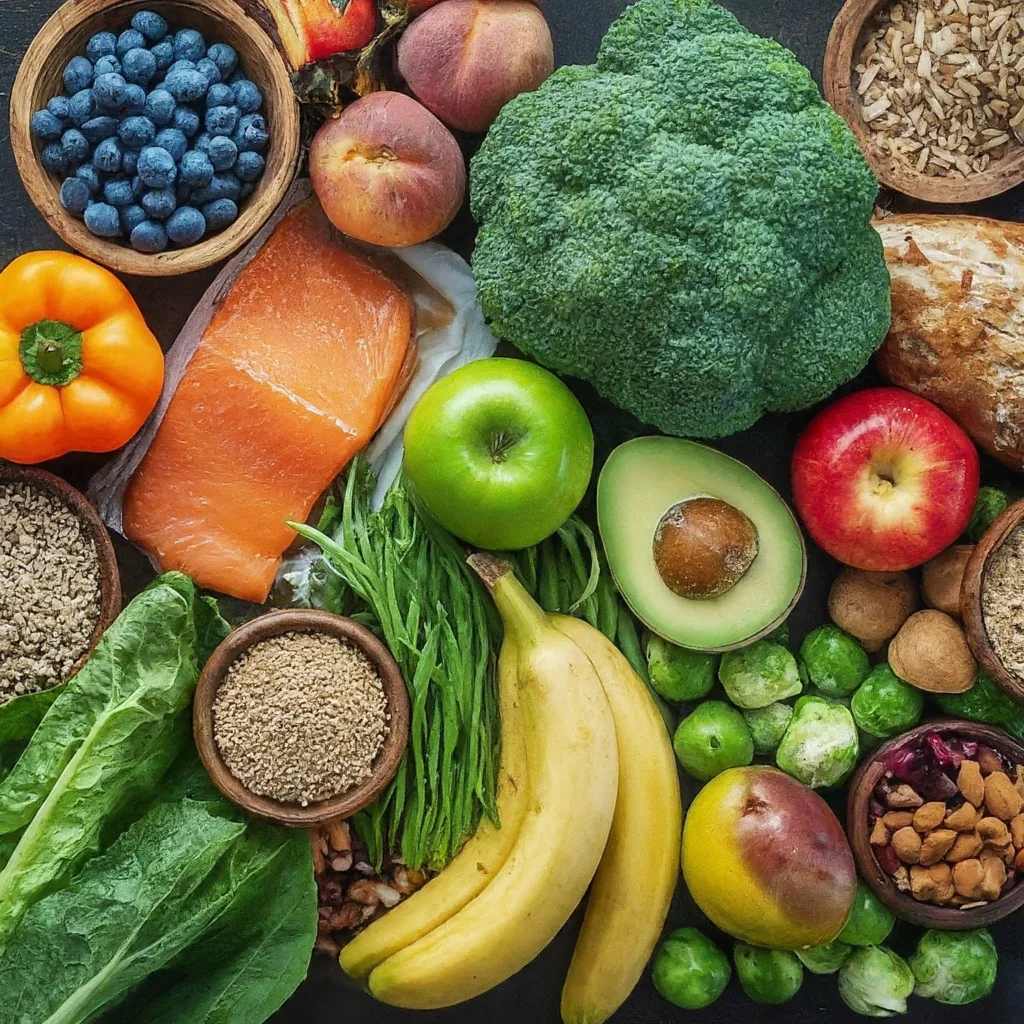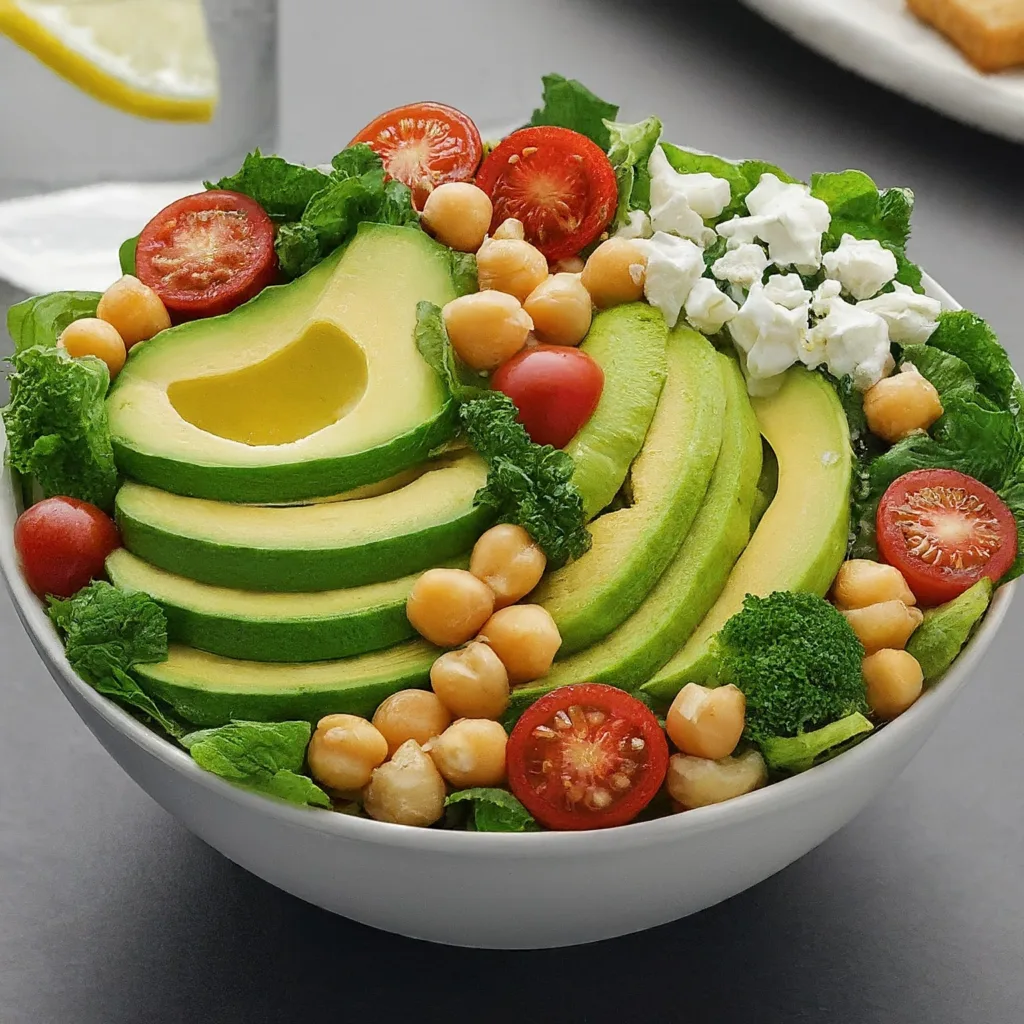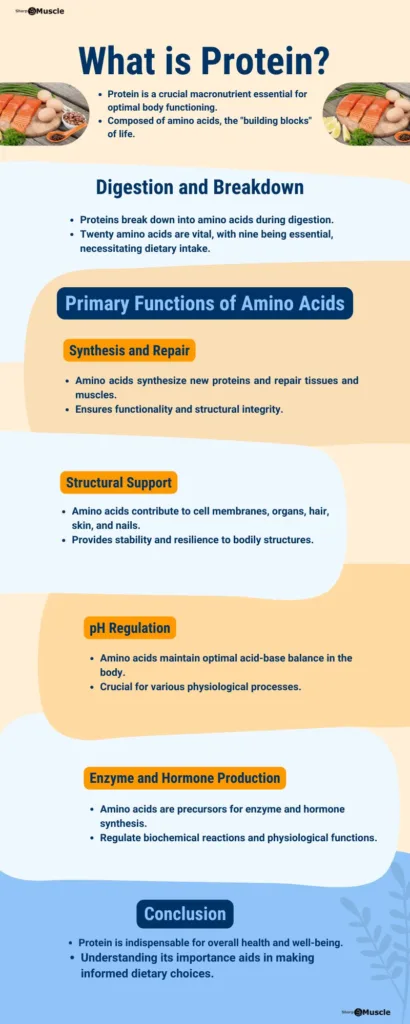Adequate protein intake is important for maintaining good health and supporting various bodily functions such as building and repairing tissues, producing enzymes and hormones, and supporting a healthy immune system.
What is protein?
Protein is a macronutrient that is essential for the growth, repair, and maintenance of tissues in the body. It is made up of chains of amino acids and plays important roles in many bodily functions, including building and repairing muscles, producing hormones and enzymes, supporting a healthy immune system, and transporting nutrients and oxygen in the blood.
Why adequate protein intake is important?
Adequate protein intake is crucial for overall health and wellness, because it performs a variety of crucial functions.
It is essential for the growth, repair, and maintenance of all tissues in the body, including muscles, skin, hair, and nails. Many hormones and enzymes in the body are made from proteins, which help regulate various bodily functions, such as digestion and metabolism. Protein is necessary for the production of antibodies and white blood cells, which help protect the body from infections and diseases. Proteins called hemoglobin and myoglobin are responsible for carrying oxygen in the blood and storing it in muscles. They help regulate fluid balance in the body by attracting and retaining water.
In conclusion, adequate protein intake is necessary to support these important functions, and a deficiency in protein can lead to various health problems, including muscle wasting, poor wound healing, and a weakened immune system.
Benefits of adequate protein intake
Protein intake provides many benefits for the body, including:
- Building and repairing tissues: Protein is an essential building block for tissues such as muscles, skin, hair, and nails. 1 Adequate protein intake helps repair damaged tissues and build new ones.
- Maintaining muscle mass: As we age, we naturally lose muscle mass, but adequate protein intake can help slow this process and maintain muscle mass, which is important for maintaining physical function and preventing falls in older adults.
- Supporting bone health: Protein is important for bone health, as it helps build and maintain bone density. Adequate protein intake can help prevent osteoporosis, a condition in which bones become brittle and fragile. 2 3
- Boosting the immune system: Protein is essential for the function of the immune system, as it helps produce antibodies and white blood cells that fight off infection and disease. 4 5
- Regulating metabolism: Protein helps regulate metabolism by boosting feelings of fullness and preventing overeating. It also helps maintain a healthy weight by increasing muscle mass, which can lead to a higher metabolism. 6
- Improving athletic performance: Adequate protein intake is important for athletes, as it helps build and repair muscle tissue and provides the body with the energy it needs to perform at a high level. 7 8
- Aiding in weight loss: High protein diet have been shown to be effective for weight loss, as protein helps regulate appetite and promotes feelings of fullness. 9 10
- Reducing the risk of chronic diseases: Adequate protein intake has been linked to a reduced risk of several chronic diseases, including heart disease, stroke, and type 2 diabetes. 11
- Improving heart health: Consuming a diet that is high in plant-based protein sources, such as beans, lentils, and nuts, has been linked to improved heart health, as these foods are typically low in saturated fat and high in fiber and other nutrients. 12
- Improving gut health: Protein is important for gut health, as it helps regulate digestion and maintain the integrity of the intestinal lining. Adequate protein intake can help prevent digestive disorders, such as leaky gut syndrome and inflammatory bowel disease. 13 14
General guidelines
The recommended daily amount of protein varies based on several factors, including age, sex, weight, and level of physical activity.
As a general guideline, adult men and women need about 0.8 grams of protein per kilogram of body weight. For example:
- A sedentary woman weighing 68 kilograms (150 pounds) needs about 55 grams of protein per day.
- A sedentary man weighing 77 kilograms (170 pounds) needs about 62 grams of protein per day.
- A highly active woman weighing 68 kilograms (150 pounds) needs about 68 grams of protein per day.
- A highly active man weighing 77 kilograms (170 pounds) needs about 77 grams of protein per day.
The general guidelines for protein intake for different age groups:
- Children (1-3 years): 1.0-1.5 grams per kilogram of body weight
- Children (4-13 years): 0.95-1.0 grams per kilogram of body weight
- Adolescents (14-18 years): 0.85-1.0 grams per kilogram of body weight
- Adult women: 0.8 grams per kilogram of body weight
- Adult men: 0.8 grams per kilogram of body weight
- Older adults (65 years and older): 0.8 grams per kilogram of body weight
What “grams of protein” really means?
The term “grams of protein” refers to the amount of protein in a food or beverage, typically expressed in grams per serving. The term is used to help people understand how much protein they are consuming as part of their diet.
Protein is a macronutrient, meaning that the body needs it in large amounts to function properly. Protein is made up of chains of amino acids, which are the building blocks of the body’s tissues, including muscle, skin, hair, and nails. When you see a food or beverage labeled as having a certain number of grams of protein, it means that the serving of that food contains that amount of protein in terms of its weight.
For example, a serving of chicken breast weighing 100 grams might contain 25 grams of protein. This information can be used to help individuals track their protein intake and ensure that they are getting enough protein to meet their nutritional needs.
Protein requirements for different fitness types
Endurance athletes
Endurance athletes, such as runners and cyclists, may benefit from slightly higher protein intake to support muscle recovery and repair. A common recommendation is 1.2-1.4 grams of protein per kilogram of body weight. 15) 16 For example, a 68 kilogram (150 pound) endurance athlete may need about 82-97 grams of protein per day.
Strength athletes
Strength athletes, such as weightlifters and bodybuilders, may benefit from slightly higher protein intake to support muscle growth and recovery. A common recommendation is 1.6-1.7 grams of protein per kilogram of body weight. 17 For example, a 77 kilogram (170 pound) strength athlete may need about 127-130 grams of protein per day.
Recreational fitness enthusiasts
Recreational fitness enthusiasts may benefit from protein intake in the range of 0.8-1.0 grams of protein per kilogram of body weight. For example, a 68 kilogram (150 pound) recreational fitness enthusiast may need about 55-68 grams of protein per day.
Adequate protein intake as per fitness goals
Maintaining weight
To maintain weight, individuals should aim to consume the recommended daily amount of protein based on their age, sex, weight, and physical activity level. This is typically 0.8 grams of protein per kilogram of body weight for adult men and women.
Gaining weight
To gain weight, individuals may need to consume slightly more protein than the recommended daily amount, along with adequate amounts of carbohydrates and healthy fats. A common recommendation for weight gain is 1.2-1.5 grams of protein per kilogram of body weight, combined with a calorie-sufficient diet.
Losing weight
To lose weight, individuals may need to consume slightly less protein than the recommended daily amount, along with adequate amounts of fiber and healthy fats. A common recommendation for weight loss is 1.0-1.2 grams of protein per kilogram of body weight, combined with a calorie-controlled diet. 18 19
Examples:
- An adult woman weighing 68 kilograms (150 pounds) who wants to maintain weight needs about 55 grams of protein per day.
- An adult man weighing 77 kilograms (170 pounds) who wants to gain weight may need to consume about 92-115 grams of protein per day.
- An adult woman weighing 68 kilograms (150 pounds) who wants to lose weight may need to consume about 68-82 grams of protein per day.
Protein in pregnancy
Protein is an essential nutrient during pregnancy and is important for fetal growth and development. During pregnancy, the recommended daily protein intake increases to around 71 grams per day for women who are 19 years and older. 20
Consume a variety of protein-rich foods to ensure adequate intake of all essential amino acids. Protein-rich foods include:
- Meat and poultry: chicken, turkey, beef, pork, etc.
- Fish and seafood: salmon, tuna, shrimp, etc.
- Eggs
- Dairy products: milk, cheese, yogurt, etc.
- Legumes: beans, lentils, peas, etc.
- Nuts and seeds: almonds, peanuts, chia seeds, etc.
- Tofu and soy products
Women who are pregnant or planning a pregnancy should consult a healthcare professional for personalized protein recommendations. Additionally, it’s important to consume a variety of protein-rich foods to ensure adequate intake of all essential amino acids.
Here’s an example of a day’s worth of protein-rich foods for a pregnant woman:
- Breakfast: A scrambled egg with whole wheat toast, providing approximately 15 grams of protein.
- Snack: Greek yogurt with mixed berries, providing approximately 15 grams of protein.
- Lunch: Grilled chicken breast with quinoa and steamed vegetables, providing approximately 30 grams of protein.
- Snack: Raw vegetables with hummus, providing approximately 6 grams of protein.
- Dinner: Grilled salmon with roasted potatoes and mixed greens, providing approximately 30 grams of protein.
Protein calculation
Calculating adequate protein intake is a straightforward process, and there are a few different methods that can be used.
Calorie method
Calorie method is a way to determine how many calories a person needs per day based on their individual needs and goals.
This method takes into account factors such as age, sex, weight, height, and physical activity level to estimate total calorie needs. The estimated daily calorie needs can then be used to determine the appropriate intake of macronutrients, including protein.
The general guideline for protein intake is to consume 10-35% of total daily calories from protein. For example, if a person needs 2,000 calories per day to maintain weight, they should aim to consume 200-700 calories from protein, or 50-175 grams of protein.
Bodyweight method
The bodyweight method is a way to determine protein needs based on a person’s body weight.
According to this method, an individual should consume 0.8 grams of protein per kilogram of body weight per day as a minimum. This provides enough protein for the body’s basic metabolic needs, but may not be sufficient for those who are physically active, trying to build muscle, or lose weight.
For example, a 68 kilogram (150 pound) person should consume at least 55 grams of protein per day, while a 77 kilogram (170 pound) person should consume at least 62 grams of protein per day.
However, for individuals who are physically active, trying to build muscle, or lose weight, a higher protein intake may be beneficial. A common recommendation for these individuals is 1.2-1.7 grams of protein per kilogram of body weight per day.
Macronutrient breakdown method
The common method is to use the macronutrient breakdown method, which involves determining the percentage of daily calorie intake that comes from protein, carbohydrates, and fat.
Here’s an example of how to calculate protein intake using the macronutrient breakdown method:
Determine daily calorie needs
The first step is to determine daily calorie needs. This can be done using an online calorie calculator or by consulting a registered dietitian. For example, let’s say a sedentary woman needs to consume 2000 calories per day.
Determine protein needs
The recommended daily protein intake for an adult is 0.8 grams of protein per kilogram of body weight. To convert this to a daily calorie amount, multiply the protein intake by 4 (the number of calories per gram of protein). So, for a sedentary woman who needs to consume 2000 calories per day and needs 0.8 grams of protein per kilogram of body weight, the daily protein calorie intake would be 320 calories (0.8 grams x 4 calories per gram = 320 calories).
Determine the macronutrient breakdown
The next step is to determine the macronutrient breakdown, or the percentage of daily calorie intake that comes from protein, carbohydrates, and fat. A typical macronutrient breakdown for a high-protein diet is 40% carbohydrates, 30% fat, and 30% protein.
Calculate protein intake
Finally, to calculate protein intake, divide the daily protein calorie intake by the total daily calorie intake. So, for a sedentary woman who needs to consume 2000 calories per day and has a daily protein calorie intake of 320 calories, the protein intake would be 16% of her daily calorie intake (320 calories ÷ 2000 calories = 0.16, or 16%).
Negative effects of excessive protein
While adequate protein intake provides many health benefits, consuming too much protein can have negative effects, including:
- Kidney damage: Consuming too much protein can put stress on the kidneys, which can lead to kidney damage over time, especially in people with pre-existing kidney problems.
- Calcium loss: Excessive protein intake can lead to calcium loss, as the body excretes more calcium in the urine. This can increase the risk of osteoporosis and bone fractures.
- Dehydration: Consuming high protein diet can increase the risk of dehydration, as protein metabolism requires more water than carbohydrate or fat metabolism.
- Increased risk of heart disease: Consuming a diet that is high in animal-based protein sources, such as red meat, can increase the risk of heart disease, as these foods are typically high in saturated fat and cholesterol.
- Increased risk of certain cancers: Consuming a diet that is high in processed and grilled meats, such as bacon and burgers, has been linked to an increased risk of certain types of cancer, including colon cancer.
Sample high protein diet plan
High protein diet plan for muscle building (veg and non-veg)
For Non-Vegetarians:
- Breakfast: 3 scrambled eggs with 2 slices of whole grain toast and avocado (protein: 21g, carbohydrates: 28g, fat: 15g)
- Snack: Greek yogurt with mixed berries (protein: 20g, carbohydrates: 18g, fat: 0g)
- Lunch: Grilled chicken breast with roasted vegetables and quinoa (protein: 43g, carbohydrates: 46g, fat: 10g)
- Snack: Tuna salad on whole grain crackers (protein: 18g, carbohydrates: 12g, fat: 8g)
- Dinner: Grilled salmon with brown rice and steamed vegetables (protein: 38g, carbohydrates: 46g, fat: 12g)
For Vegetarians:
- Breakfast: 2 scrambled tofu with 2 slices of whole grain toast and avocado (protein: 12g, carbohydrates: 28g, fat: 15g)
- Snack: Greek yogurt with mixed berries (protein: 20g, carbohydrates: 18g, fat: 0g)
- Lunch: Grilled tofu with roasted vegetables and quinoa (protein: 26g, carbohydrates: 46g, fat: 10g)
- Snack: Hummus and vegetable wrap (protein: 12g, carbohydrates: 28g, fat: 10g)
- Dinner: Lentil soup with whole grain bread (protein: 18g, carbohydrates: 46g, fat: 8g)
High protein diet plan for weight loss (veg and non-veg)
For Non-Vegetarians:
- Breakfast: 2 boiled eggs with mixed vegetables and whole grain toast (protein: 12g, carbohydrates: 28g, fat: 10g)
- Snack: Greek yogurt with mixed berries (protein: 20g, carbohydrates: 18g, fat: 0g)
- Lunch: Grilled chicken breast with roasted vegetables and brown rice (protein: 43g, carbohydrates: 36g, fat: 10g)
- Snack: Turkey slices on whole grain crackers (protein: 18g, carbohydrates: 12g, fat: 8g)
- Dinner: Grilled fish with steamed vegetables and quinoa (protein: 38g, carbohydrates: 28g, fat: 10g)
For Vegetarians:
- Breakfast: 2 scrambled tofu with mixed vegetables and whole grain toast (protein: 12g, carbohydrates: 28g, fat: 10g)
- Snack: Greek yogurt with mixed berries (protein: 20g, carbohydrates: 18g, fat: 0g)
- Lunch: Grilled tofu with roasted vegetables and quinoa (protein: 26g, carbohydrates: 36g, fat: 10g)
- Snack: Hummus and vegetable wrap (protein: 12g, carbohydrates: 28g, fat: 10g)
- Dinner: Vegetable soup with whole grain bread (protein: 12g, carbohydrates: 28g, fat: 8g)
High protein diet plan for endurance training (veg and non-veg)
For Non-Vegetarians:
- Breakfast: 2 boiled eggs with mixed vegetables and whole grain toast (protein: 12g, carbohydrates: 28g, fat: 10g)
- Snack: Greek yogurt with mixed berries (protein: 20g, carbohydrates: 18g, fat: 0g)
- Lunch: Grilled chicken breast with roasted vegetables and brown rice (protein: 43g, carbohydrates: 36g, fat: 10g)
- Snack: Turkey slices on whole grain crackers (protein: 18g, carbohydrates: 12g, fat: 8g)
- Dinner: Grilled fish with steamed vegetables and quinoa (protein: 38g, carbohydrates: 28g, fat: 10g)
- Pre-workout: Banana with almond butter (protein: 7g, carbohydrates: 27g, fat: 16g)
- Post-workout: Protein shake with whey protein and banana (protein: 25g, carbohydrates: 30g, fat: 0g)
For Vegetarians:
- Breakfast: 2 scrambled tofu with mixed vegetables and whole grain toast (protein: 12g, carbohydrates: 28g, fat: 10g)
- Snack: Greek yogurt with mixed berries (protein: 20g, carbohydrates: 18g, fat: 0g)
- Lunch: Grilled tofu with roasted vegetables and quinoa (protein: 26g, carbohydrates: 36g, fat: 10g)
- Snack: Hummus and vegetable wrap (protein: 12g, carbohydrates: 28g, fat: 10g)
- Dinner: Vegetable soup with whole grain bread (protein: 12g, carbohydrates: 28g, fat: 8g)
- Pre-workout: Banana with almond butter (protein: 7g, carbohydrates: 27g, fat: 16g)
- Post-workout: Protein shake with pea protein and banana (protein: 25g, carbohydrates: 30g, fat: 0g)
- National Research Council (US) Subcommittee on the Tenth Edition of the Recommended Dietary Allowances. Recommended Dietary Allowances: 10th Edition. Washington (DC): National Academies Press (US); 1989. 6, “Protein and Amino Acids.” Available from: https://www.ncbi.nlm.nih.gov/books/NBK234922/.[↩]
- Bonjour JP. Protein intake and bone health. Int J Vitam Nutr Res. 2011 Mar;81(2-3):134-42. doi: 10.1024/0300-9831/a000063. PMID: 22139564. ((Bonjour JP. “Protein intake and bone health.” Int J Vitam Nutr Res. 2011 Mar;81(2-3):134-42. doi: 10.1024/0300-9831/a000063. PMID: 22139564.[↩]
- Mangano KM, Sahni S, Kerstetter JE. “Dietary protein is beneficial to bone health under conditions of adequate calcium intake: an update on clinical research.” Curr Opin Clin Nutr Metab Care. 2014 Jan;17(1):69-74. doi: 10.1097/MCO.0000000000000013. PMID: 24316688; PMCID: PMC4180248.[↩]
- Li P, Yin YL, Li D, Kim SW, Wu G. “” Amino acids and immune function.” Br J Nutr. 2007 Aug;98(2):237-52. doi: 10.1017/S000711450769936X. Epub 2007 Apr 3. PMID: 17403271.[↩]
- Daly JM, Reynolds J, Sigal RK, Shou J, Liberman MD. “Effect of dietary protein and amino acids on immune function.” Crit Care Med. 1990 Feb;18(2 Suppl):S86-93. PMID: 2105184. Available from: https://pubmed.ncbi.nlm.nih.gov/2105184/.[↩]
- Morrison CD, Laeger T. “Protein-dependent regulation of feeding and metabolism.” Trends Endocrinol Metab. 2015 May;26(5):256-62. doi: 10.1016/j.tem.2015.02.008. Epub 2015 Mar 11. PMID: 25771038; PMCID: PMC4416985.[↩]
- Cintineo HP, Arent MA, Antonio J, Arent SM. “Effects of Protein Supplementation on Performance and Recovery in Resistance and Endurance Training.” Front Nutr. 2018 Sep 11;5:83. doi: 10.3389/fnut.2018.00083. PMID: 30255023; PMCID: PMC6142015.[↩]
- Jäger R, Kerksick CM, Campbell BI, Cribb PJ, Wells SD, Skwiat TM, Purpura M, Ziegenfuss TN, Ferrando AA, Arent SM, Smith-Ryan AE, Stout JR, Arciero PJ, Ormsbee MJ, Taylor LW, Wilborn CD, Kalman DS, Kreider RB, Willoughby DS, Hoffman JR, Krzykowski JL, Antonio J. “International Society of Sports Nutrition Position Stand: protein and exercise.” J Int Soc Sports Nutr. 2017 Jun 20;14:20. doi: 10.1186/s12970-017-0177-8. PMID: 28642676; PMCID: PMC5477153.[↩]
- Leidy HJ, Tang M, Armstrong CL, Martin CB, Campbell WW. “The effects of consuming frequent, higher protein meals on appetite and satiety during weight loss in overweight/obese men.” Obesity (Silver Spring). 2011 Apr;19(4):818-24. doi: 10.1038/oby.2010.203. Epub 2010 Sep 16. PMID: 20847729; PMCID: PMC4564867.[↩]
- Mettler S, Mitchell N, Tipton KD.” Increased protein intake reduces lean body mass loss during weight loss in athletes.” Med Sci Sports Exerc. 2010 Feb;42(2):326-37. doi: 10.1249/MSS.0b013e3181b2ef8e. PMID: 19927027.[↩]
- Malik VS, Li Y, Tobias DK, Pan A, Hu FB. “Dietary Protein Intake and Risk of Type 2 Diabetes in US Men and Women.” Am J Epidemiol. 2016 Apr 15;183(8):715-28. doi: 10.1093/aje/kwv268. Epub 2016 Mar 28. PMID: 27022032; PMCID: PMC4832052.[↩]
- Virtanen HEK, Voutilainen S, Koskinen TT, Mursu J, Tuomainen TP, Virtanen JK. “Intake of Different Dietary Proteins and Risk of Heart Failure in Men: The Kuopio Ischaemic Heart Disease Risk Factor Study.” Circ Heart Fail. 2018 Jun;11(6):e004531. doi: 10.1161/CIRCHEARTFAILURE.117.004531. PMID: 29844244; PMCID: PMC6023591.[↩]
- Ma N, Tian Y, Wu Y, Ma X. “Contributions of the Interaction Between Dietary Protein and Gut Microbiota to Intestinal Health.” Curr Protein Pept Sci. 2017;18(8):795-808. doi: 10.2174/1389203718666170216153505. PMID: 28215168.[↩]
- Wu S, Bhat ZF, Gounder RS, Mohamed Ahmed IA, Al-Juhaimi FY, Ding Y, Bekhit AEA. “Effect of Dietary Protein and Processing on Gut Microbiota-A Systematic Review.” Nutrients. 2022 Jan 20;14(3):453. doi: 10.3390/nu14030453. PMID: 35276812; PMCID: PMC8840478.[↩]
- Wu G. “Dietary protein intake and human health.” Food Funct. 2016 Mar;7(3):1251-65. doi: 10.1039/c5fo01530h. PMID: 26797090.[↩]
- Phillips SM, Van Loon LJ. “Dietary protein for athletes: from requirements to optimum adaptation.” J Sports Sci. 2011;29 Suppl 1:S29-38. doi: 10.1080/02640414.2011.619204. PMID: 22150425.[↩]
- Hoffman, J.R., Ratamess, N.A., Kang, J. et al. “Effect of Protein Intake on Strength, Body Composition and Endocrine Changes in Strength/Power Athletes.” J Int Soc Sports Nutr 3, 12 (2006). https://doi.org/10.1186/1550-2783-3-2-12.[↩]
- Pesta DH, Samuel VT. “A high-protein diet for reducing body fat: mechanisms and possible caveats.” Nutr Metab (Lond). 2014 Nov 19;11(1):53. doi: 10.1186/1743-7075-11-53. PMID: 25489333; PMCID: PMC4258944.[↩]
- Halton TL, Hu FB. “The effects of high protein diets on thermogenesis, satiety and weight loss: a critical review.” J Am Coll Nutr. 2004 Oct;23(5):373-85. doi: 10.1080/07315724.2004.10719381. PMID: 15466943.[↩]
- Elango R, Ball RO.” Protein and Amino Acid Requirements during Pregnancy.” Adv Nutr. 2016 Jul 15;7(4):839S-44S. doi: 10.3945/an.115.011817. PMID: 27422521; PMCID: PMC4942872.[↩]



